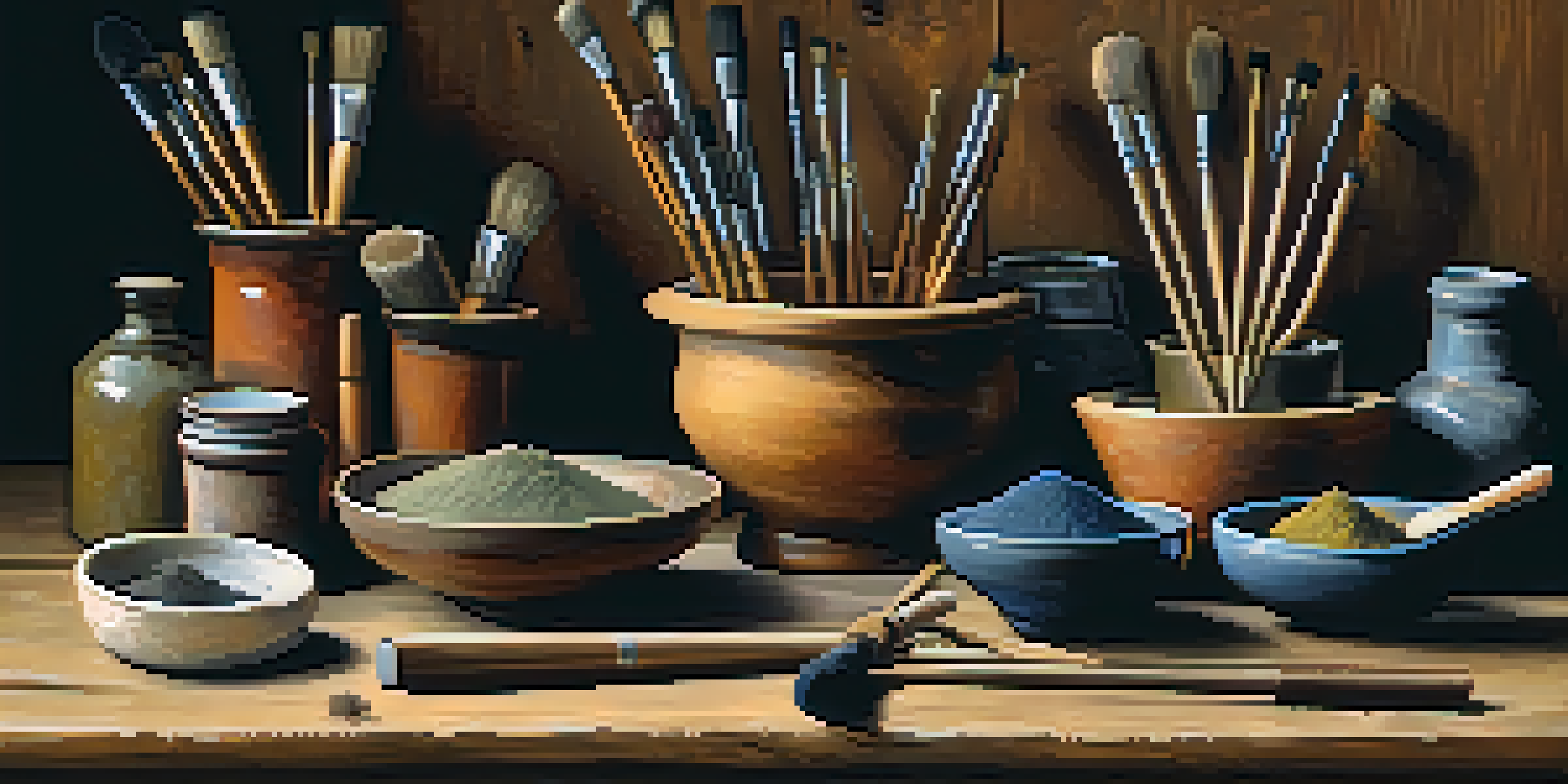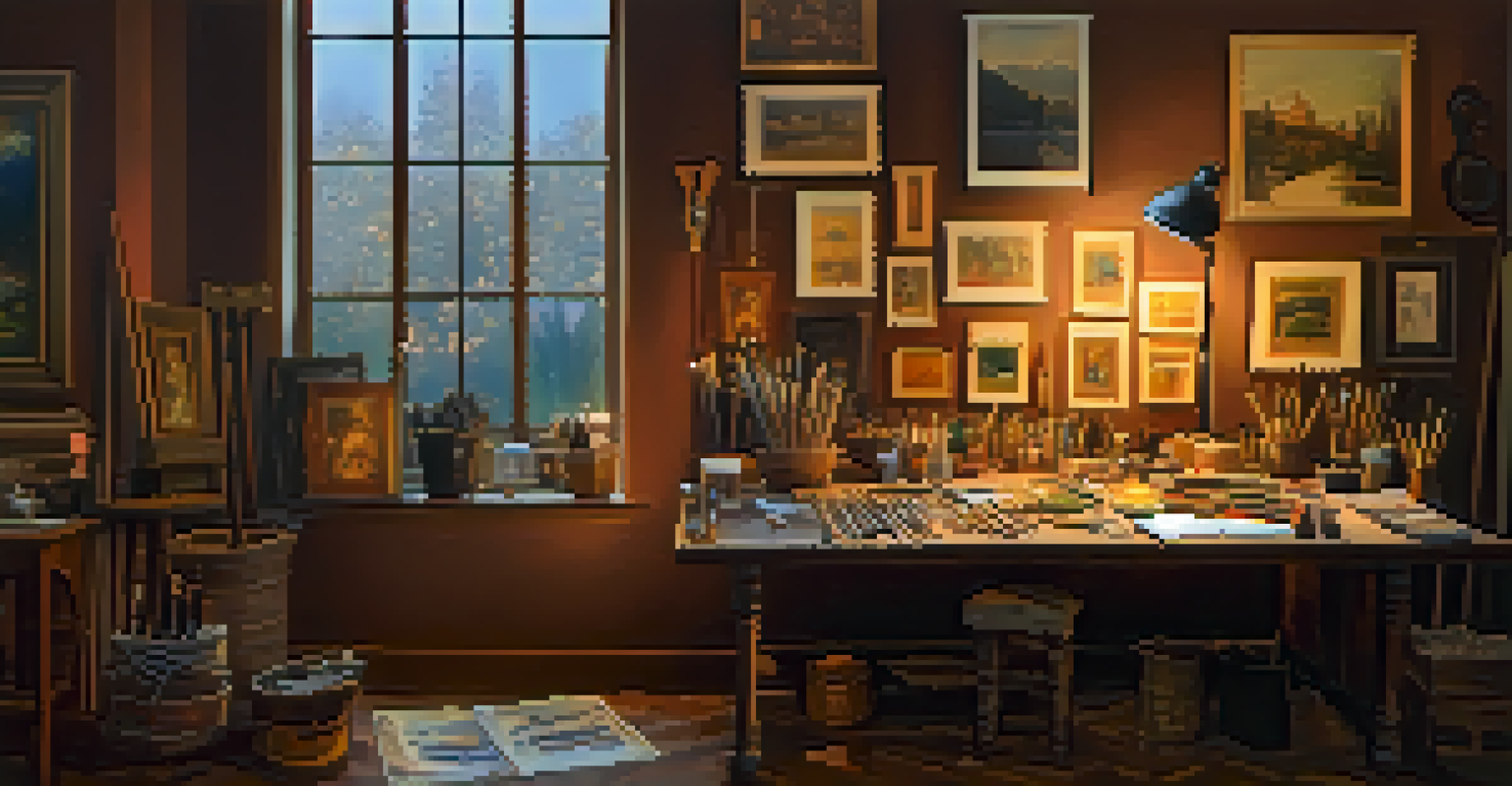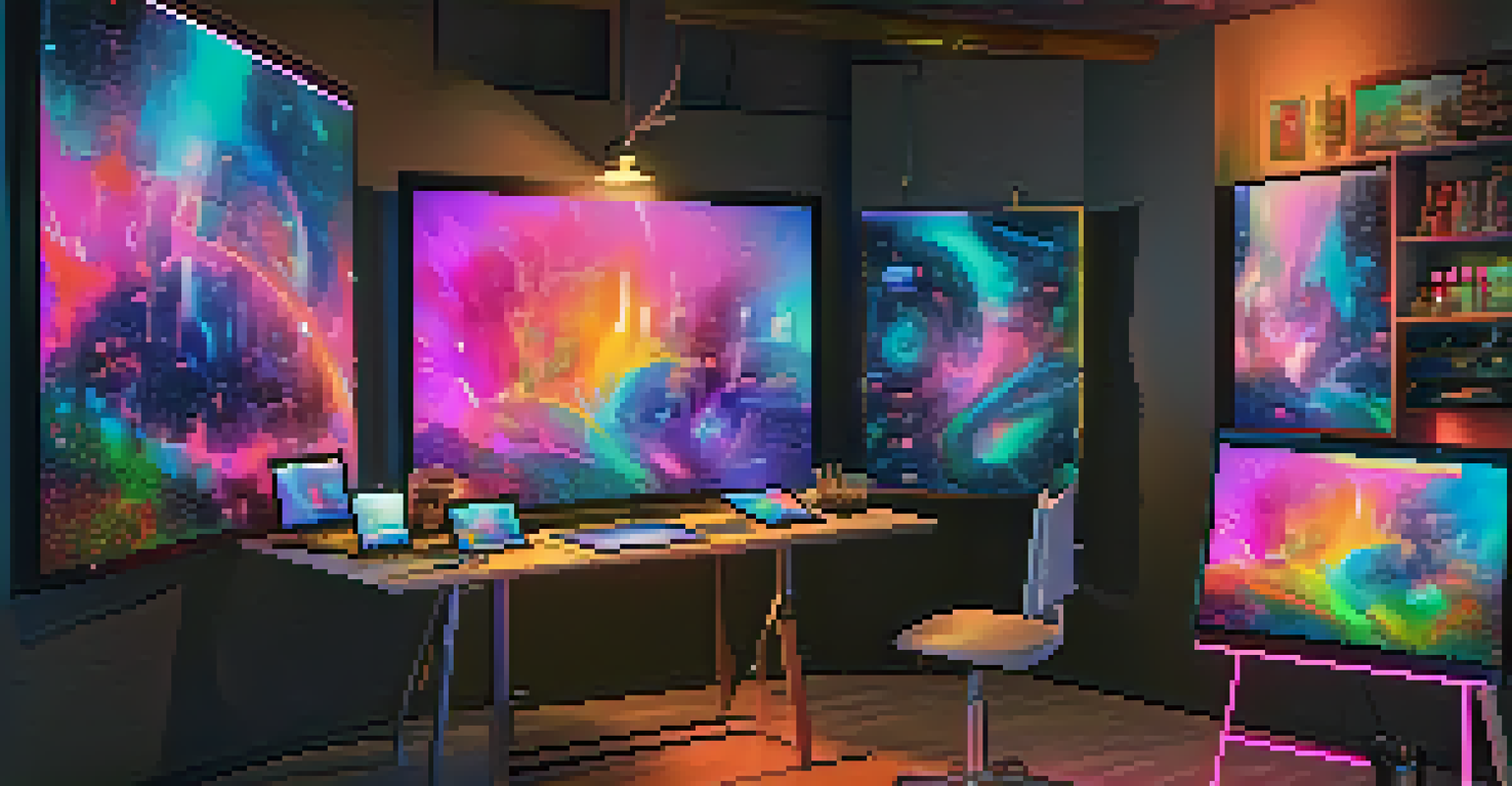Evolution of Pigment Application Tools Through the Ages

The Birth of Pigment Application: Early Tools and Techniques
The earliest pigment application tools can be traced back to prehistoric times, where ancient humans used natural materials like sticks and their fingers to apply pigments. These early artists utilized natural dyes from minerals, plants, and animals, creating simple yet powerful forms of expression on cave walls.
Art is the most beautiful of all lies.
As communities developed, so did their techniques for applying pigments. The introduction of rudimentary brushes made from animal hair and plant fibers allowed for greater precision and creativity in artwork. This transition marked an important step in the evolution of artistic expression, showcasing the innate human desire to create and communicate visually.
The use of tools not only enhanced the aesthetic quality of the artwork but also transformed the way stories were told. From depicting daily life to spiritual beliefs, these early applications of pigment laid the foundation for future artistic endeavors across civilizations.
The Rise of Brushes: Ancient Civilizations and Their Innovations
As we moved into ancient civilizations, such as Egypt and Mesopotamia, the development of specialized brushes became prominent. These societies recognized the importance of tools in creating intricate designs and hieroglyphics, leading to more sophisticated methods of applying pigments.

Egyptians, for example, crafted brushes from various materials, including reeds and animal hair, to achieve different textures and effects. This innovation allowed them to create stunning artworks that not only served aesthetic purposes but also conveyed religious and political messages.
Evolution of Tools Enhances Artistry
From prehistoric fingers to specialized brushes, the development of pigment application tools has significantly improved artistic expression throughout history.
The introduction of new pigments and binding agents during this period further enhanced the quality of artwork. The ability to mix colors and create detailed imagery demonstrated how tools evolved alongside artistic techniques, reflecting the cultural values of the time.
Medieval Times: The Advent of Fine Art Tools
The medieval period saw a significant transformation in pigment application tools, particularly with the rise of guilds and formalized art training. Painters began using more refined brushes made from squirrel hair and other fine materials, which allowed for greater control and detail in their work.
Every artist dips his brush in his own soul, and paints his own nature into his pictures.
Additionally, the creation of new painting surfaces, such as wood panels and canvas, required different approaches to pigment application. Artists experimented with layering techniques and glazes, leading to richer, more vibrant artworks that captured the imagination of society.
This era also marked the beginning of oil paint, which required specific brushes designed to handle the thick, buttery consistency of the medium. As artists became more skilled, the tools they used continued to evolve, reflecting advancements in both technique and artistic vision.
The Renaissance: A Flourishing of Pigment Application Techniques
The Renaissance ignited a passion for realism and detail in art, and this was mirrored in the evolution of pigment application tools. Artists like Leonardo da Vinci and Michelangelo pushed the boundaries of brush design, experimenting with different shapes and sizes to achieve their desired effects.
With the advent of the Renaissance came a greater understanding of color theory and composition. Painters began to use a variety of brushes, including flat, round, and fan brushes, to create depth and texture in their works, allowing for unprecedented levels of realism.
Innovation Drives Artistic Techniques
Each era, from the Renaissance to the Industrial Revolution, saw innovations in pigment application that reflected and influenced cultural values and artistic styles.
The meticulous nature of this period also led to the refinement of painting techniques, with artists layering colors and employing techniques like sfumato to create soft transitions. This mastery of pigment application tools played a crucial role in the artistic achievements of the time.
The Industrial Revolution: Innovations in Pigment Application
The Industrial Revolution brought about significant changes in the production of pigments and the tools used to apply them. Mass production of synthetic pigments made a wider range of colors accessible to artists, while innovations in brush manufacturing led to more affordable options for both professionals and amateurs.
With the introduction of new materials, such as synthetic bristles, artists began to experiment with various brush types that could create unique effects. The availability of pre-made brushes allowed for a democratization of art, making it more accessible to aspiring artists.
As art movements such as Impressionism emerged, the rapid changes in tools and techniques encouraged artists to break away from traditional methods. This newfound freedom allowed for more expressive and spontaneous application of pigment, shaping the direction of modern art.
The 20th Century: Revolutionizing Pigment Application Tools
The 20th century was a vibrant period of experimentation and innovation in the realm of pigment application. Artists began to embrace a wide range of tools beyond traditional brushes, incorporating palette knives, sponges, and even their fingers to achieve unique effects and textures.
The introduction of airbrushes and spray paints revolutionized the way artists applied pigments, allowing for smooth gradients and intricate designs that were previously unattainable. This technological advancement opened the door for new art forms, including street art and digital art, further expanding the definition of artistic expression.
Digital Age Transforms Art Creation
The advent of digital painting tools has expanded the possibilities for artists, blending traditional techniques with technology for limitless creative expression.
The rise of mixed media also encouraged artists to combine various materials and techniques, leading to a rich tapestry of styles and approaches. The evolution of pigment application tools in this era reflected a broader cultural shift towards individual expression and creativity.
The Digital Age: New Frontiers in Pigment Application
In the current digital age, the concept of pigment application has transcended traditional tools, as artists now harness the power of technology. Digital painting software offers an array of brushes that mimic the effects of traditional mediums, allowing for endless experimentation and creativity.
The ability to create and manipulate colors digitally has opened new avenues for artists, enabling them to explore textures and effects that would be impossible with physical materials. This fusion of technology and art has blurred the lines between traditional and digital practices, creating a dynamic landscape for creative expression.

As we look to the future, the evolution of pigment application tools continues to inspire artists worldwide. The blending of techniques and technologies promises to shape the art world in exciting ways, ensuring that the journey of pigment application remains as vibrant as ever.